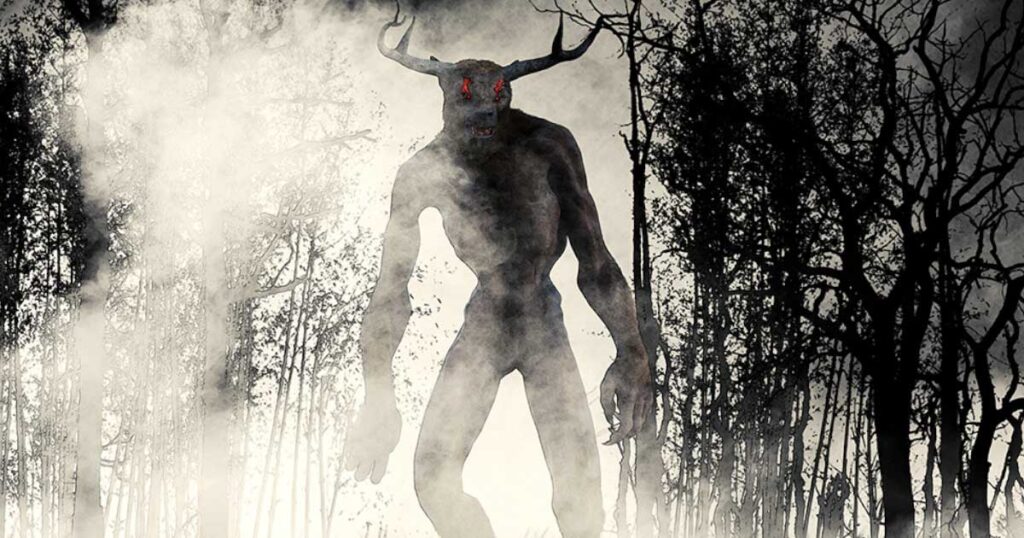
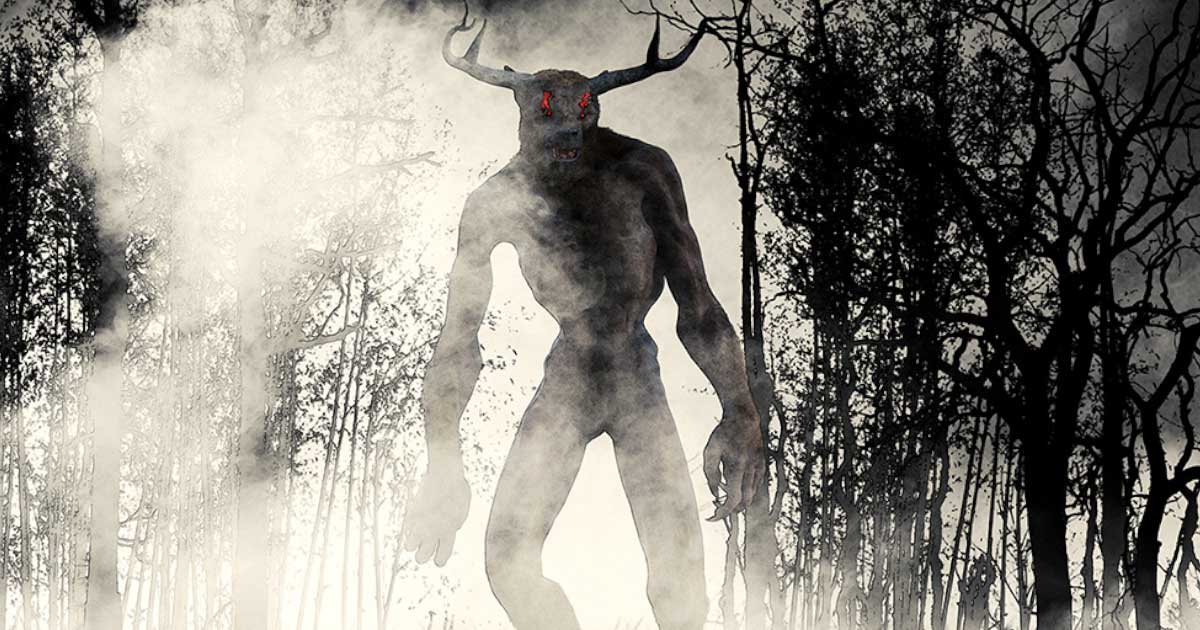
The Wendigo is a horrifying creature of Algonquian Native American legends said to devour human flesh to survive a harsh winter. But are they only part of Native American mythology or are there really cannibalistic humanoids waiting in forests for their next victim?
The Algonquians are some of the most extensive and numerous of the Native American groups in North America, and they once lived all along the Atlantic Coast and the Great Lakes Region. However, Wendigo-like creatures are also found in the legends of other Native American tribes, including the neighbors of the Algonquians, the Iroquois. Amongst these peoples, a creature known as the Stonecoat bears some similarities to the Wendigo. But, what is a Wendigo?
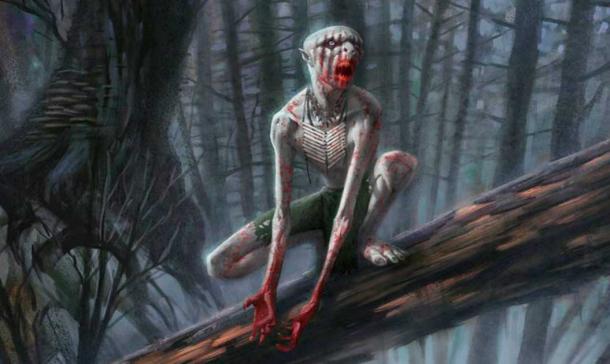
Have you ever asked yourself “what is a Wendigo,” this is a depiction of one. (creepypasta.wikia.com)
A Wendigo’s Insatiable Hunger
Roughly translated, the word Wendigo (also spelt Windigo and Windego) means “the evil spirit that devours mankind.” Another translation, said to be made by a German explorer around 1860, equates the word Wendigo with “cannibal.” Wendigoag are said to have an insatiable hunger for human flesh – no matter how much flesh they eat, they remain hungry.
This hunger is reflected in their appearance, and accordingly the Wendigo are described as being extremely thin. Despite their gaunt physiques, Wendigo are described by some as giants, measuring at about 4.5 m (14.8 ft) in height.
Whilst there are slight variations as to the physical description of this creature amongst the different Algonquian peoples, it is generally agreed that Wendigo have glowing eyes, long yellowed fangs and long tongues. Most Wendigo are also said to have sallow and yellowish skin, though others say that they are matted with hair or have decaying skin.
Legends say that Wendigo were once human beings. According to the most popular version of the story, a Wendigo is formed whenever a human being resorted to cannibalism, even if it were done in order to survive. When a person consumes the flesh of another human being, he or she is believed to be overcome by evil spirits and transformed into a Wendigo.
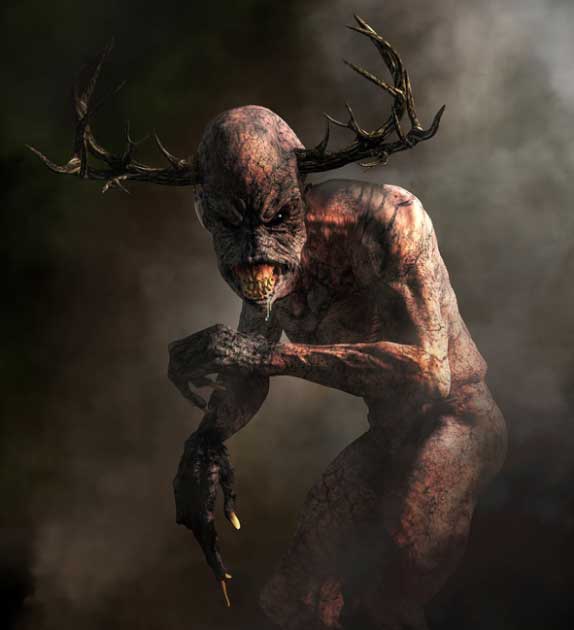
A horrifying Wendigo of Native American legend. (Daniel Eskridge / Adobe Stock)
Deals with the Devil and Where to Find a Wendigo
In another version of the story, the first Wendigo is said to have been a warrior who made a deal with the Devil. In order to save his tribe, he gave up his soul and was transformed into a Wendigo. When peace ensued, there was no need for such a fearsome creature. The warrior was banished from his tribe and forced to live as an outcast.
Some believe that the human person continues to reside within the Wendigo, specifically where its heart should be. This person is frozen, and the only way to kill a Wendigo is to kill the human within it as well. A few legends state that the frozen person is successfully rescued from inside the creature; in most cases, however, death is the only way to free a person from the Wendigo.
Wendigo are believed to roam around the forests where the Algonquians lived. Forest dwellers that disappeared over the years were rumored to have been eaten by these monsters. Many Wendigo sightings have been reported over time, not only by Native Americans, but by white settlers as well.
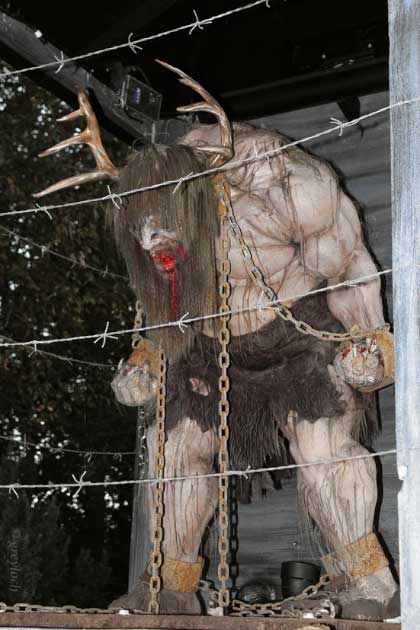
Depiction of a wendigo in a cage on display in “Wendigo Woods” in Busch Gardens Williamsburg. (Greyloch / CC BY-SA 2.0)
For example, between the late 1800s and the 1920s, a Wendigo is said to have appeared near a town called Roseau in northern Minnesota. It has been claimed that each time a sighting of this creature was made, an unexpected death followed. The sightings, however, eventually stopped, and things went back to normal.
Amongst the Cree, there is a traditional dance called the Wihtikokansimoowin, or “Wendigo-like dance.” During the dance, the fearsome Wendigo is portrayed satirically by the dancers. In addition to satirizing the Wendigo, some Native Americans even became so-called Wendigo hunters. Belief in the Wendigo forms just a small part of American belief in the supernatural, with 1 in 8 Americans having admitted to a psychic reading, according to the Psychic Guild.
At the beginning of the 20th century, an 87-year-old Cree man by the name of Jack Fiddler was tried for the murder of a Cree woman. Whilst he pleaded guilty to the crime, he defended himself by saying that the woman was on the verge of transforming into a Wendigo, as she was being possessed by the evil spirit. Therefore, she had to be killed before she murdered other members of the tribe. In addition to this woman, Fiddler claimed to have slain at least 13 other Wendigoag during his lifetime.